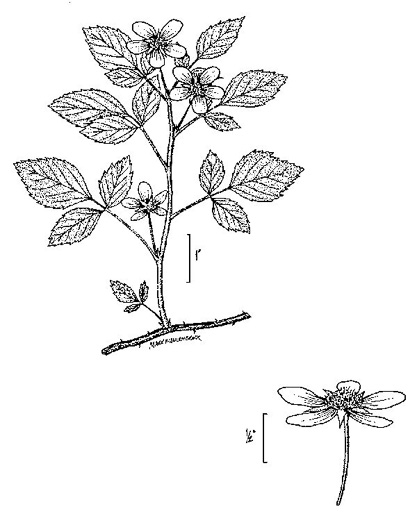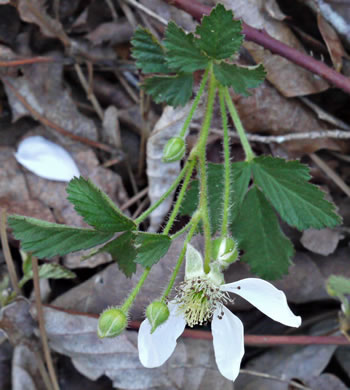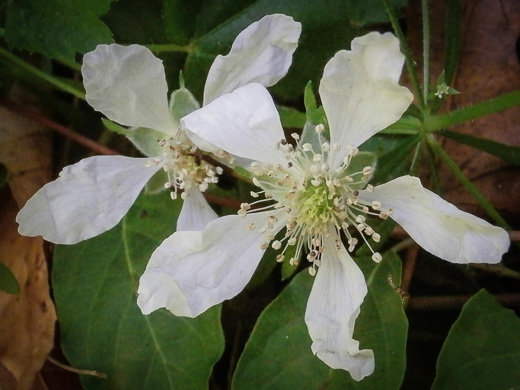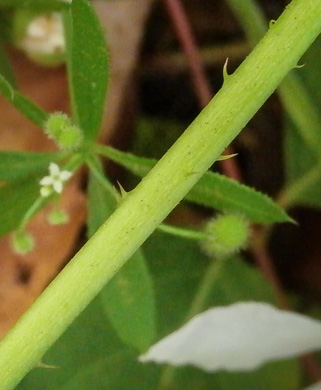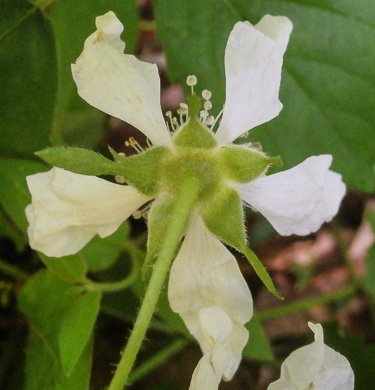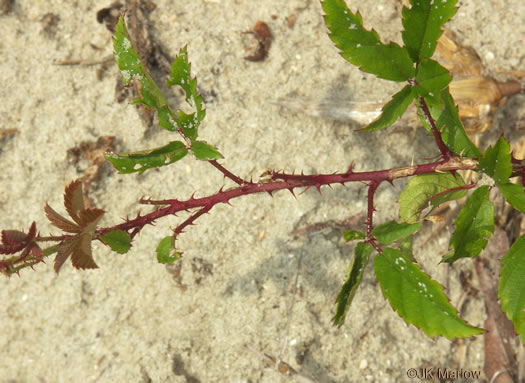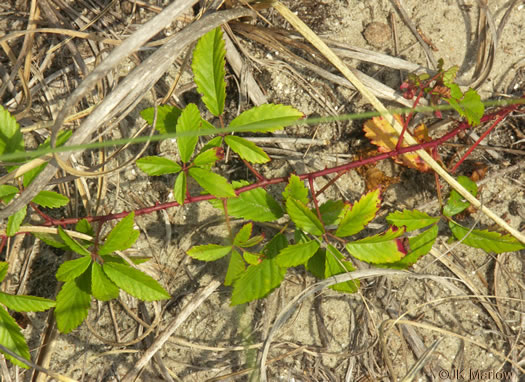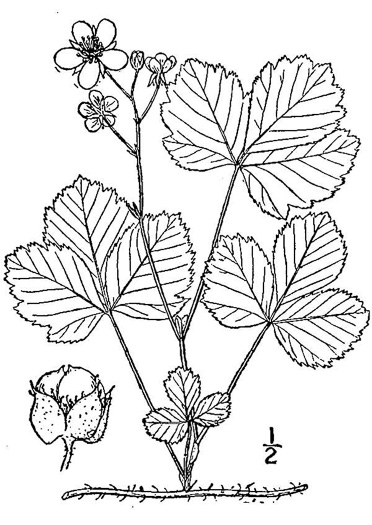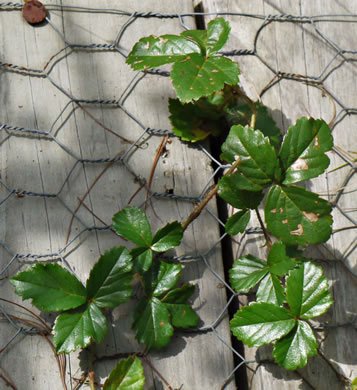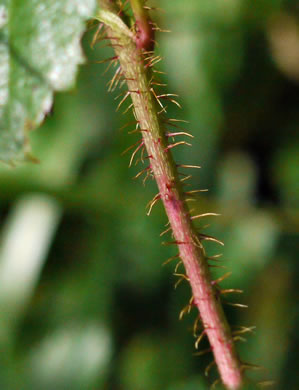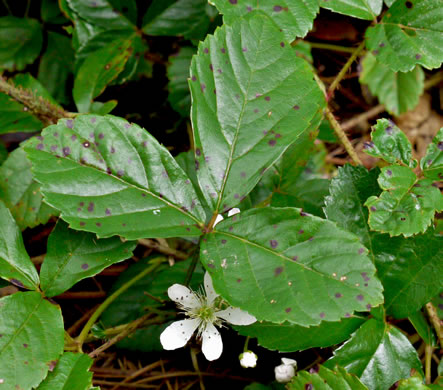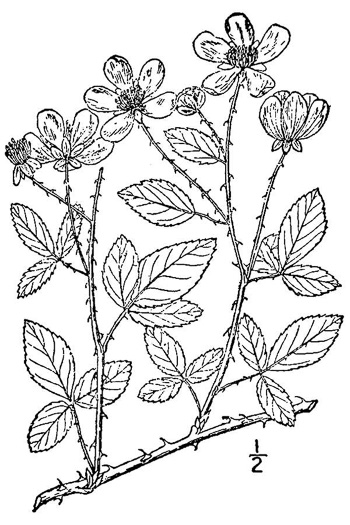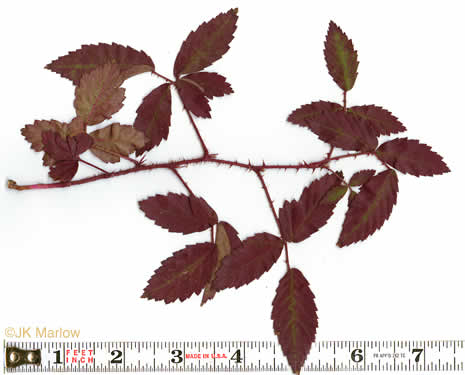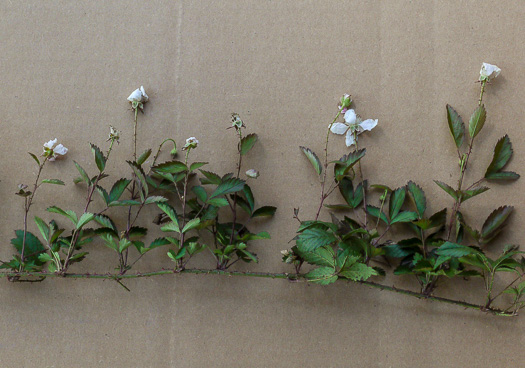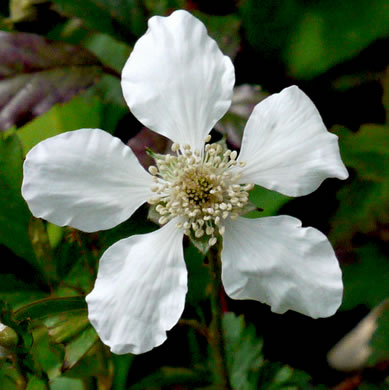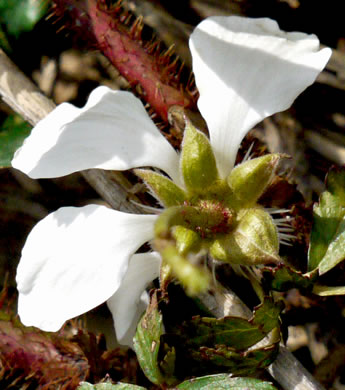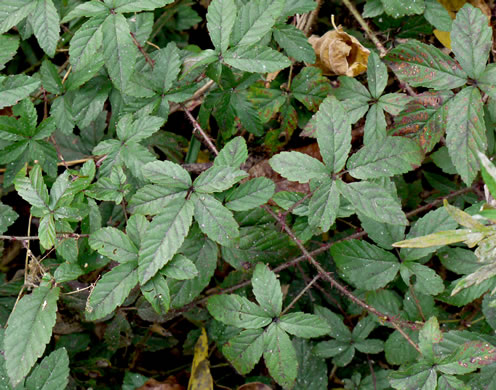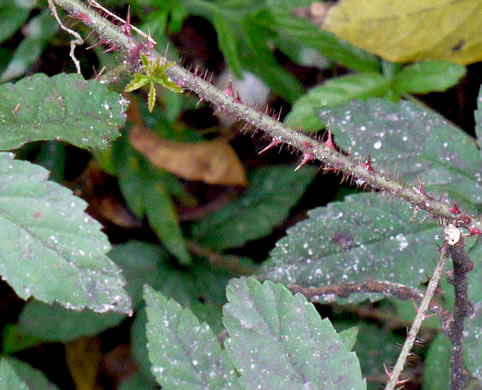Your search found 19 image(s) of Dewberry species.
To see larger pictures, click or hover over the thumbnails.
To go to the plant's detail page, click its name.
 Habitat: Old fields, woodlands, roadsides, disturbed areas
Habitat: Old fields, woodlands, roadsides, disturbed areas
Inflorescence a flat-topped or elongate cyme, or flowers solitary, per Vascular Flora of the Carolinas (Radford, Ahles, & Bell, 1968).
The 5 petals white, obovate, 1.5-2.5cm long, per Wildflowers of the Sandhills Region (Sorrie, 2011).
Stems armed with stout-based and usually recurved prickles (bristles lacking), per Weakley's Flora.
Pedicels pubescent, often stipitate-glandular. Sepals densely pubescent, per Vascular Flora of the Carolinas (Radford, Ahles, & Bell, 1968).
Thorns usually short, broad-based, and curved, per Vascular Flora of the Carolinas (Radford, Ahles, & Bell, 1968).
Leaflets ovate to lance-elliptic, serrate or doubly serrate, per Vascular Flora of the Carolinas (Radford, Ahles, & Bell, 1968).
 Habitat: Bogs, moist woodlands and forests, disturbed moist areas
Habitat: Bogs, moist woodlands and forests, disturbed moist areas
Leaves simply or doubly crenate to serrate, usually lustrous above, per Vascular Flora of the Carolinas (Radford, Ahles, & Bell, 1968).
Slender stems trailing on ground, terete, with bristles, per Native Shrubs and Woody Vines of the Southeast (Foote & Jones, 1989).
Aggregate 0.8-1.5cm broad and about as long, juicy, per Vascular Flora of the Carolinas (Radford, Ahles, & Bell, 1968).
Pedicels 2cm or less. Petals about 1cm long, per Vascular Flora of the Carolinas (Radford, Ahles, & Bell, 1968).
 Habitat: Roadsides, old fields, thickets, disturbed areas
Habitat: Roadsides, old fields, thickets, disturbed areas
Leaves persistent & turning red in winter, per Vascular Flora of the Carolinas (Radford, Ahles, & Bell, 1968).
Inflorescence reduced, normally to a single flower per branch of the floricane, per Weakley's Flora.
Pedicels 2.5cm or more long. Petals 1.5-2.5cm long, per Vascular Flora of the Carolinas (Radford, Ahles, & Bell, 1968).
Sepals 5-7mm long, pubescent, per Vascular Flora of the Carolinas (Radford, Ahles, & Bell, 1968).
Leaflets lanceolate-ovate, acute, margins sharply or doubly serrate, per Vascular Flora of the Carolinas (Radford, Ahles, & Bell, 1968).
Stem bristling with straight red-purplish hairs along w reddish [prickles], per Forest Plants of the Southeast and Their Wildlife Uses (Miller & Miller, 2005).

